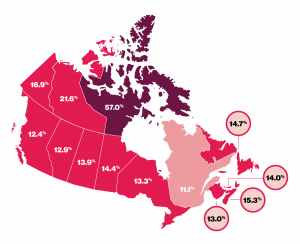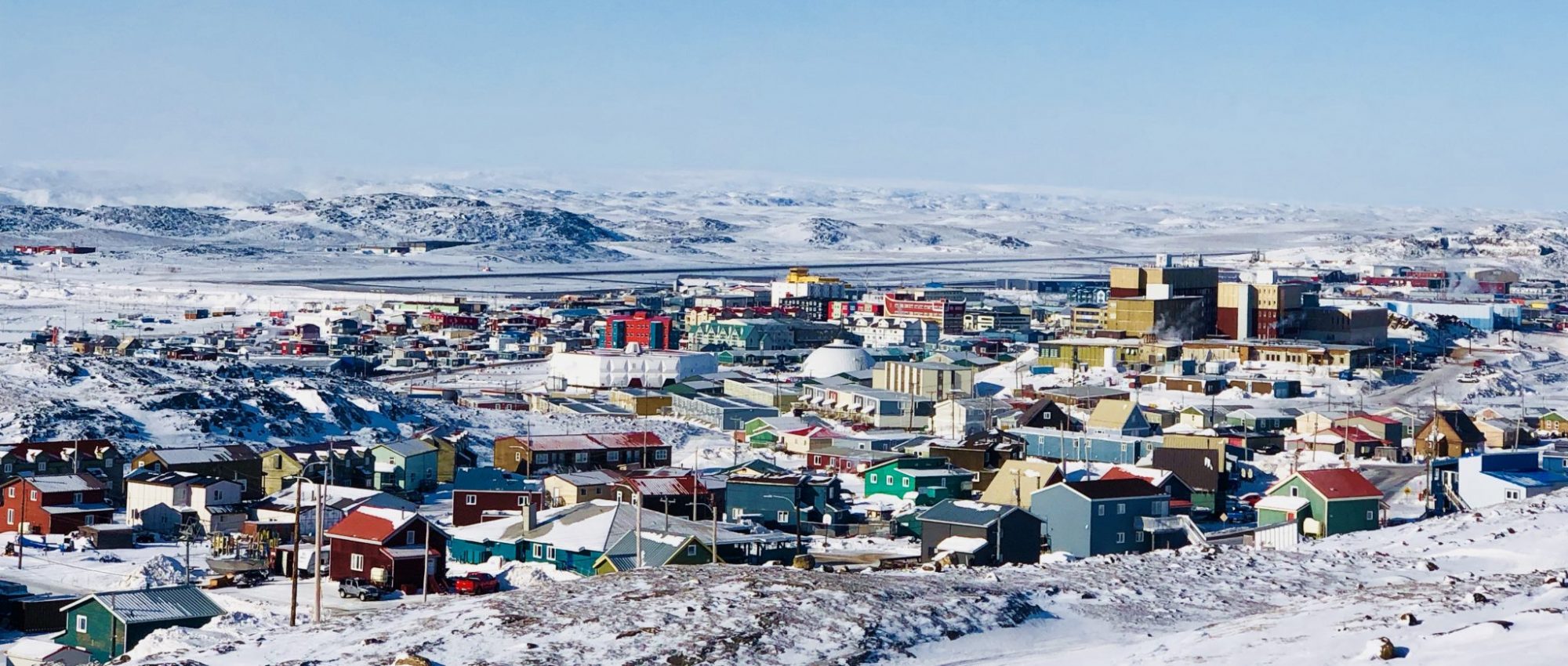
Background
Food insecurity is one of the largest challenges facing Indigenous communities in the Arctic, and has been severely exacerbated by climate change in the past decade. Traditional concepts of food insecurity have historically relied on more reformist ideology: the development of niche markets, agricultural subsidies, market-led reforms, etc. However, this view has failed to address the needs of subsistence communities that prioritize self-determination, cultural traditions, social/ethical sustainability, and social justice in an attempt to achieve food security and food sovereignty. As mentioned on the Important Terminology tab, the Inuit Circumpolar Council, a multinational, non-governmental organization representing the Inuit peoples, developed a more holistic, balanced definition of food security for Inuit communities. Their definition relies on the inherent connection between the Inuit and their surrounding ecosystem, and the ability to access, care-take, protect, and respect their environment. For the Inuit, food security is not just about access and availability, but also the ability to continue pursuing a subsistence style of life.
Case Study: Food Insecurity in Nunavut
Nunavut, the largest, northernmost territory in Canada, separated from the Northwest territories in 1999 through the Nunavut Act and Nunavut Claims Settlement Act. It is the second least populated territory in Canada, with 83% of its population being Inuit. Nearly 70% of Inuit homes in Nunavut are food insecure, which is eight times higher than the Canadian average, and one of the highest rates for an Indigenous population in a developed country.

Inuit Diet
Inuit communities divide their diet into two categories: country food and market food. Country food is a term used to describe the traditional Inuit subsistence diet, including meat, fish, birds, and foraged food. Country food not only provides many health benefits, but it is an integral part of Inuit identity and culture, and contributes to the self-sufficiency of Inuit communities. Market food, on the other hand, refers to food shipped into Nunavut and sold at local grocery stores. While market foods may seem accessible and convenient for these remote Inuit communities, they have become exorbitantly expensive and the main force behind health issues among Inuit peoples.

In the following video, you hear from Matty Matheson, a popular Canadian chef that traveled to Nunavut, and his conversations with Inuit people about their traditional diet and the challenges they are facing with rising market prices and changing climatic conditions. Matty is even able to talk with Leesee Papatsie, the founder of Nunavut’s Feeding My Family campaign, about her local efforts and hopes for future national assistance programs.
Challenges
Addressing the issue of food insecurity in Nunavut is so complicated due to the diversity of compounding factors affecting the problem. High food insecurity rates are a result of a lack of resources to address poverty, climate change adaptation and mitigation, mental health issues, and economic disparities. Climate change is increasingly forcing the Inuit to rely on market goods. Yet, the extremely high price of groceries is prompting Inuit to buy the cheapest, most unhealthy food leading to serious health problems within their communities. Climate adaptation, mitigation, resilience, and food policy reform all need to place Indigenous knowledge, sovereignty, and traditional ways of life at the forefront of their agendas. This is even more important as unpredictable and unfamiliar weather patterns have made traditional Indigenous knowledge less dependable.

Historically, there has been a disconnect between what Indigenous hunters view as most at risk as a result of climate change, and what fish and wildlife management agencies choose to focus their policies on. Scientists, policy makers, and state/non-state actors must emphasize the importance of knowledge sharing and the co-production of knowledge when addressing issues of food insecurity and climate change, especially since these topics are commonly discussed in agriculture-based food systems and not subsistence ones.
Presentation
The following presentation provides a more in depth and nuanced look into the factors affecting food insecurity in Nunavut and the ways in which local and national policy makers have addressed the issue. The presentation ties together the topics of climate change and traditional Inuit knowledge in an attempt to understand how to combat food insecurity in Nunavut.
[ensemblevideo version=”5.6.0″ content_type=”video” id=”03dc8e36-073b-4588-87f8-345e66212b05″ width=”848″ height=”480″ displaytitle=”true” autoplay=”false” showcaptions=”false” hidecontrols=”true” displaysharing=”false” displaycaptionsearch=”true” displayattachments=”true” audiopreviewimage=”true” isaudio=”false” displaylinks=”true” displaymetadata=”false” displaydateproduced=”true” displayembedcode=”false” displaydownloadicon=”false” displayviewersreport=”false” embedasthumbnail=”false” displayaxdxs=”false” embedtype=”responsive” forceembedtype=”false” name=”Food Insecurity in Nunavut – Emma Kyzivat “]
Policy Recommendations:
As mentioned in the presentation, there needs to be a greater emphasis on traditional Inuit culture and practices within food security initiatives in Nunavut. While programs like the Food Mail Subsidy and subsequent Nutrition North Canada have helped draw attention to and provide support for this pressing issue, they have lacked a clear acknowledgment and comprehension of Inuit knowledge and culture. Future policies need to be centered around the Inuit way of life rather than forcing non-Indigenous customs into Indigenous communities.
Below are a couple of policy recommendations to support the Inuit communities of Nunavut adapt to the changing climate while still maintaining their traditional diet and way of life.
-
- Subsidize traditional country food instead of mainstream market food that is not a part of Inuit culture and contributes to high rates of health problems.
- Allow for tradable hunting rights or quotas based on environmental factors. Hunting quotas established under the federal Species at Risk Act in 2002 severely constrained the Inuit’s ability to hunt certain animals which simultaneously restricted their flexibility in responding to the change. However, hunting quotas often do not take into account environmental constraints or opportunities resulting from climate change. Quotas provided to one community may not be transferable to others. It could be possible to create a trading system in which communities who lack access to a species as a result of environmental barriers could trade hunting rights with a community who has greater access to these species. A similar type of flexibility could also be applied to other legislative instruments, such as constraints on weapons required for hunting traditional food sources.
- Promote local food production through the implementation of greenhouses, composting systems, farms, fisheries, bakeries, etc., as seen with other northern jurisdictions in recent years.
